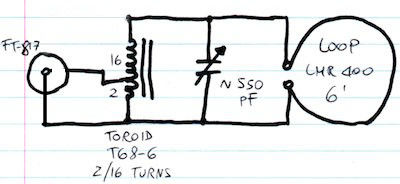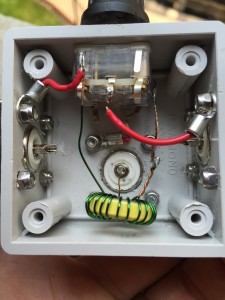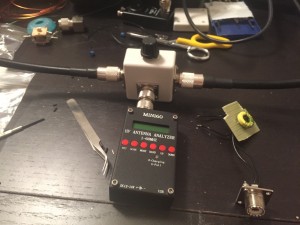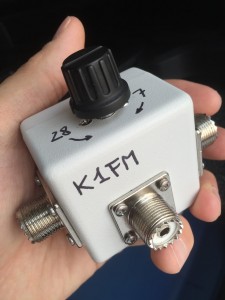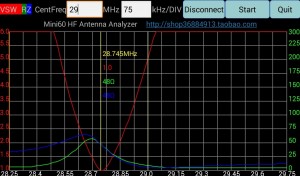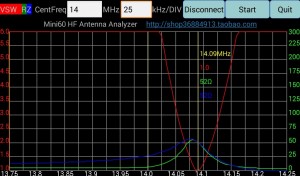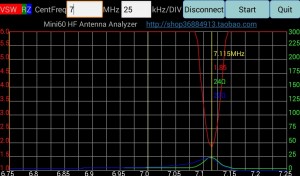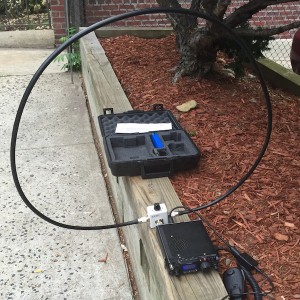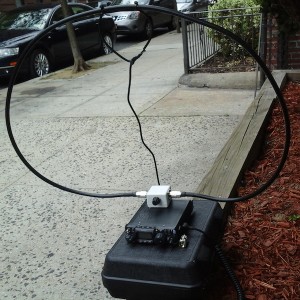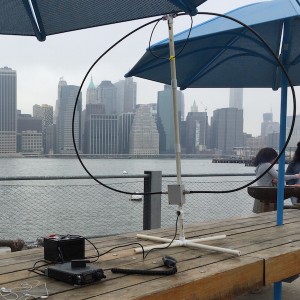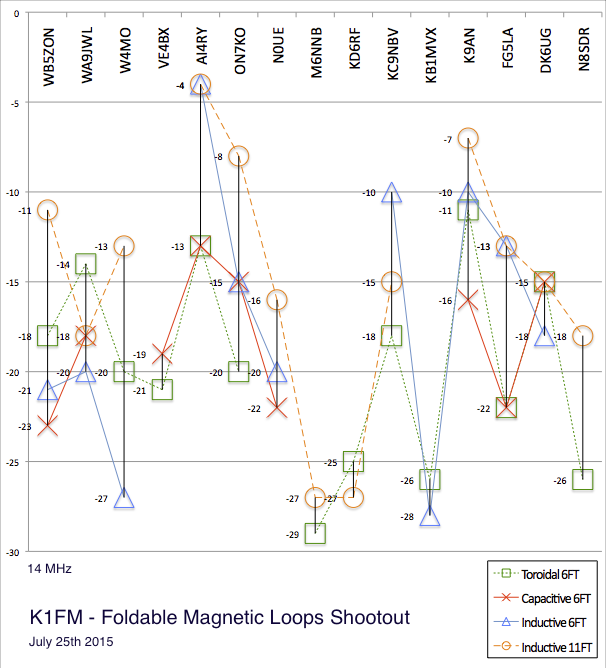In the effort of improving my ultra-portable HF antenna setup, I first looked into a Capacitively Coupled Magnetic Loop, better known as the Army Loop (or Patterson Loop). The Army loop performed well. It was so portable that I enjoyed using it before, during and after numerous Tennis matches… Here is one example:
The Army loop, however, sometimes presented a little bit of a challenge because in order to tune you need to operate two capacitors, instead of one. Generally speaking, one capacitor affects resonance while the other affects the coupling impedance. The main problem I found is that even when the SWR is very low, such impedance isn’t always what you would expect it to be (around 50 ohm). You can still match it by operating the second capacitor but there really isn’t a way – while portable – to tell how close you are to the perfect match. That’s the main reason why I decided to look for alternatives.
The idea for my next portable loop came from the Wonder Loop by Wonder Wand (not to be confused with the ‘G4ILO Wonder Loop’, which is unrelated). Wonder Wand’s Wonder Loop looks like an Army loop, but only has one capacitor. After taking a look inside I was intrigued to see a Toroidal transformer. My first reaction was: WFT?!? Then I remembered seeing something similar on the excellent N4SPP page about loops (probably the best page about magnetic loops actually available). Here is what Frank N4SPP has to say about this coupling method:
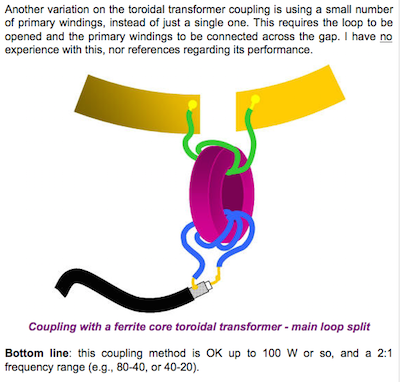
The advantages of such design are two: no need for a coupler loop and only one capacitor. Precisely what I wanted!
At this point you might ask why don’t I just use the Wonder Loop. The thing is that the Wonder Loop isn’t simply ultra-portable, it is microscopical. It’s radiator is made of a 1 mm thin copper wire… a bit too much, I guess. All I wanted was the same concept as the Wonder Loop but with a radiator of my choice (and at a smaller price!).
Here is the schematic I started working on:
This time I used a smaller Hammond Enclosure, the 1594ASGY. The capacitor, instead, is a dual gang 266 pF by Mike’s Electronic Parts. Both gangs are engaged in parallel as well as all the trimmer capacitors (trimmers are used to raise the minimum capacitance and also raise the maximum a little bit). By doing so, the loop covers from 40 to 10 meters. Here is the is the first test item:
And the analyzer results:
As you can see, on 20 meters and above not only the SWR is low but also the impedance is constantly around 50 ohm. No need for a second knob! On 30 and 40 meters, instead, conditions deteriorate considerably but I never expected any good performance from such a small loop on those bands anyways. Below 14 MHz I generally use my loop to listen only. It might happen to make a contact once in a while, but it is rare.
The loop responded as I wanted it to… But was it performing? To find out, yesterday I did the first field comparison of four different foldable loops:
1) Toroidal Coupled Loop 6FT (the antenna I’m writing about today)
2) Army Loop 6FT (the antenna I described last time)
3) Inductively Coupled 6FT Loop (classic design, just smaller than usual)
4) Inductively Coupled 11FT Loop (the classic loop! Practically a photocopy of the Alexloop)
Testing was performed on 20 meters WSPR by sending 3 frames on each antenna starting at 7PM local time. By the time I finished with the last antenna it was already 8PM and it’s possible that during such time propagation conditions evolved. The ideal way to perform this test would be transmitting with all the antennas at the same time, but I am not equipped to do that… At least not yet!
Finally, the gathered data:
As expected, the test shows the 11FT loop constantly being on top of the game. Loop dimensions are critical and on 20 meters there is a considerable difference between 11 and 6 feet circumference. On the other hand, the 6 Feet loops (Toroidal, Capacitive and Inductive) seem to be delivering similar performances. There are no clear winners or losers, which is good news because that means I can keep using the latest version (toroidal) which is smaller and simpler to use.
Future plans include building the biggest toroidal loop possible, as well as making my 11FT inductive loop lighter and easier to transport.
Best 73’s
Alain K1FM
